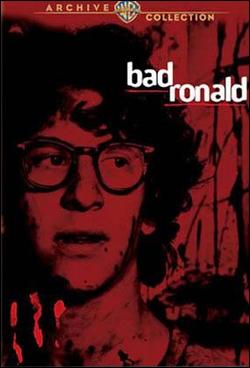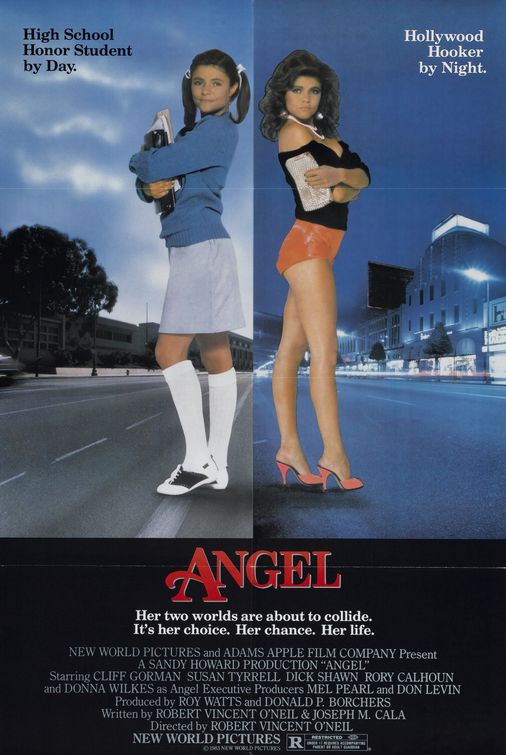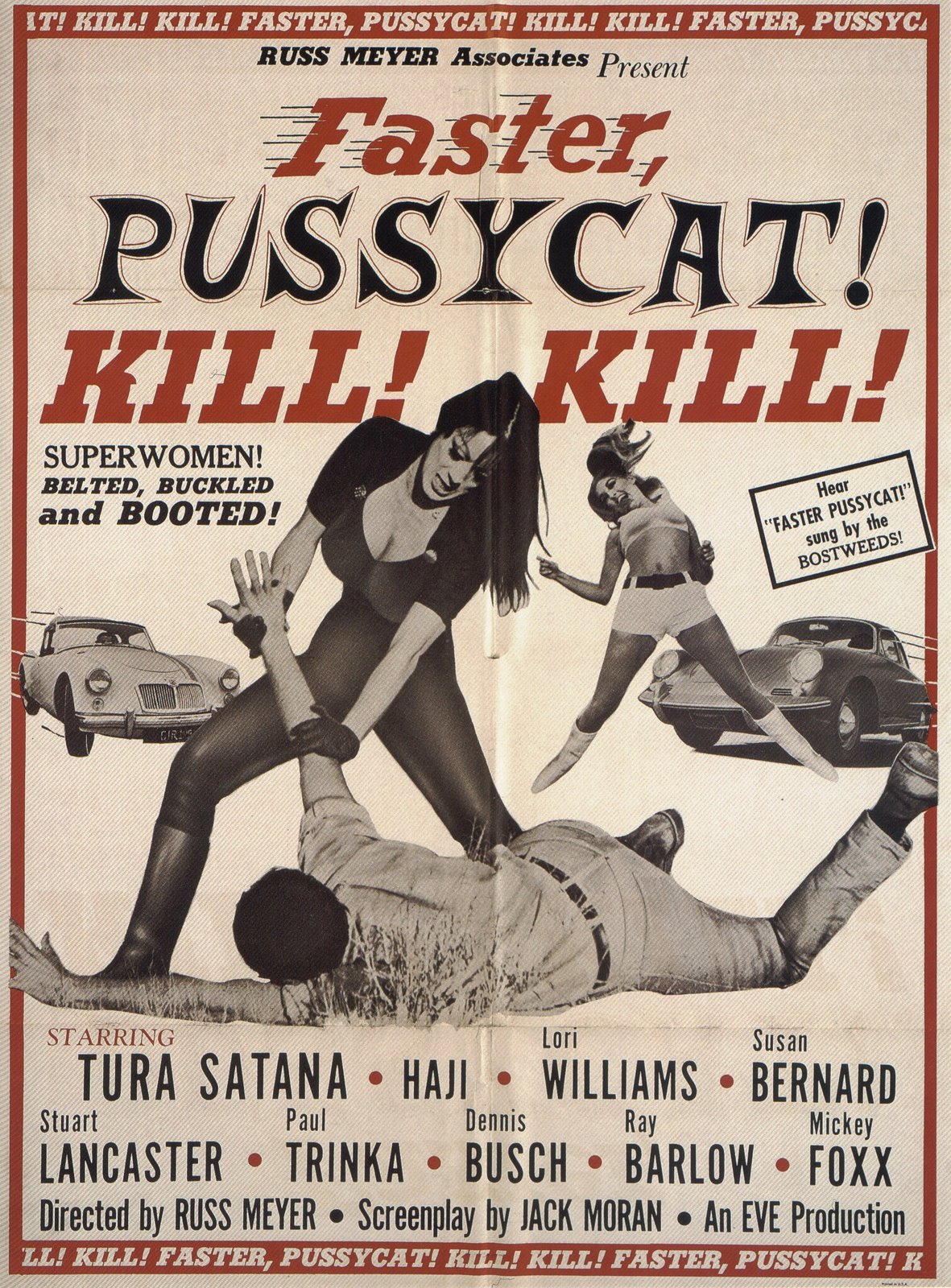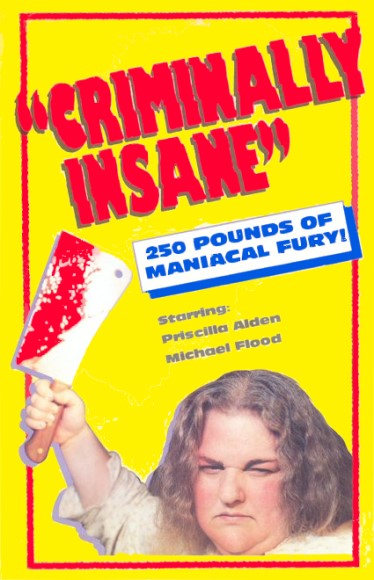Altamont Now

Ever since Marlon Brando’s Johnny in The Wild One was asked, "What are you rebelling against?" and he answered, "What have you got?" youth rebellion has been a mainstay in movies, making for some good, bad, and often subversive films. From Rebel Without A Cause to Wild In The Streets to Rock & Roll High School and Over The Edge -- all films that have elements of screwing the man. Altamont Now, directed by Joshua Brown, is more of a spoof of the genre but still keeps the spirit alive.
Like the late '60s films of Peter Watkins (Privilege, Punishment Park) or Haskell Wexler’s Medium Cool, Altamont Now has faux-documentary elements and mixes in a lot of old B-roll using numerous film sources. Unlike the acid pace of those films, this has a more modern, hyper visual and editing style that helps contribute to the movie's anarchy. The film opens a la Blair Witch Project, reporting to be lost footage; luckily that angle is never really pushed (unlike the recent fake doc Catfish where the directors are still doing press claiming the obviously staged film is real). The "this is lost footage" claim is actually making fun of an already stale storytelling element. We never for a second believe that it works as a documentary; when only two people are in a room, there always seems to be a third person in the room working the camera.
Continue ReadingSid and Nancy

Like most bios of contemporary controversial figures, Sid and Nancy has its naysayers. Some music historians and punk aficionados have claimed that the film misrepresents some of its real life characters and their time line. Those complaints may be true. But no one has a qualm with the two stunning lead performances by Chloe Webb as the beyond annoying groupie, Nancy, and Gary Oldman as the drugged out Sex Pistols bassist, Sid Vicious (actually just window dressing for the group, he had the look, but never played on the records). The two make for an insane couple; it's a deranged Romeo & Juliet, two lost souls in a sea of heroin and self-destruction. This is a love story, with some dark humor mixed in, like a gutter version of Who's Afraid Of Virginia Woolf?.
Coming off his cult hit Repo Man director Alex Cox beautifully captures the ugliness of the late '70s/early '80s punk and drug culture in London and New York. The film opens with Sid being arrested for murdering Nancy at The Chelsea Hotel (in real life many believed that he was genuinely innocent, done in by lazy New York cops who didn't want to search out the real killer). The film goes back and traces the two meeting as the Sex Pistols were taking off in London, the cover boys for the fledgling punk music scene. Nancy was an American, a stripper and a hooker who chased rock stars and drugs. After being rejected by the other Pistols, she found a willing victim in the rather naive and dim Sid. In the film she gets him hooked on the needle and becomes the voice in his head (a kinda less charming and less intelligent Yoko Ono).
Continue ReadingThe Brown Bunny

It could be a hearty bias that this is currently one of my favorite feature-length independent films. With that said, I understand that it is arguably very exclusive in terms of its audience. The Brown Bunny, written and directed by Vincent Gallo, might lend itself to being watched a few times before going down smoothly.
This film is the haunting story of Bud Clay (Vincent Gallo)—a professional motorcycle racer caught in his own literal nightmare. A repetitive adventure from New Hampshire to California coming across women that he attempts to let into his life with haste in order to mend his loneliness. But as he soon discovers, the ghost and memory of his only true love Daisy (Chloë Sevigny) is not only irreplaceable, but at the peak of his heart's desire and torment. Though Bud tries daily to fill the void of her existence, the film concludes with us being able to view the tragic end of their love and leaves a bold statement you won’t soon forget. A statement, etched in pulchritude, of a nature that only the human race suffers and yet is one of the eerie qualities that still manages to make it wonderful and unique.
Continue ReadingThe Loveless

The evolution of the road-rebel is brought to the screen in this directorial debut from Kathryn Bigelow (Near Dark, The Hurt Locker). Technically, this is the film that also introduces Willem Dafoe and has him as the star amongst an unusual '80s cast. I say unusual because you have a blend of actors who've made a decent name for themselves by '82 and ones who definitely show promise in the film, and yet this was their only role. Some were from Georgia, where the film is set, so I guess it makes sense that, for the film's simplicity, actors who normally would have been extras were used for key roles. What satisfied me the most about this film was (a) being aware that a woman directed/wrote it, and (b) it has a slow plot that forces you to stop looking for action and absorb all the messages and scarce dialogue within it.
Willem Dafoe plays Vance—a young biker with dirty fingernails and sensational tomcat essence who is adored by several passing ladies. We see him solo at first, marveling at the blacktop and defined only by it and his Harley. He and his buddies are on their way to Daytona and have stopped in a small Georgian town to repair one of their member's bikes. Without the harsh juxtaposition between this group and the locals, I don't think the film's message would be as clear. Both the townspeople and the bikers have a uniform—one pastels and the other leather. Seeing the differences between the two made me expect a war - which eventually does come in the film's climax, but not as I expected it. Many people found the film quite boring, but I'm sure they missed the subtleties that really make it a wonderful debut. For instance, Vance's status as the ringleader is evident in his manner and dress. He doesn’t exactly respect the locals, nor does he expect it from them. On the shoulder of his leather jacket are silver stars, like a general. The men he rides with are not exactly his friends, but rather people he met while in prison. The only thing they share is the love of a beautiful automobile. Without their quest to cause havoc on the way to the largest roadster gathering, all sense of brotherhood would be lost.
Continue ReadingSecret Adventures of Tom Thumb

The Bolex Brothers production, The Secret Adventures of Tom Thumb, is a creepy, yet enchanting, twist on the classic fairytale. It conjures up all sorts of menacing, unnerving, and violent imagery—unlike that of the traditional tale. It's set in a seedy tenement building where an unsuspecting couple conceive a tiny baby—a child so small that they name him Tom Thumb. We quickly see that the world is a harsh place, as Tom's mother is slain and he is kidnapped by sinister men who want to use him for experimentation and genetic research. The plot unfolds around how this tiny creature, with the help of some very unusual friends and the love of his father, escapes the evil forces holding him hostage; the subtext revolving around how this amazing child remains innocent and caring in a world full of fear, reactionary hatred, and prejudice.
The Secret Adventures of Tom Thumb uses stop-motion animation in ways that I have never seen before to create scenes of epic discomfort and fear. Live actors are combined in scenes with clay-mation figures, which causes an uncomfortable, almost anxiety driven performance by the actors, who move with a lurching stagger and speak with a mumbling coo. It took dozens of hours to animate the live actors for seconds of film—an amazing feat! But it's not just the way the live actors are animated that makes this a visual triumph. Every scene is covered in tiny animated insects, the walls seem to breathe, and the earth to shake. The sets are awe-inspiring, to say the least.
Continue ReadingBad Ronald
 Ronald (Scott Jacoby) is a good boy; he's the most caring and dutiful son a mother could ask for. His mother Elaine (Kim Hunter) is divorced and takes pride in the fact that she dismissed alimony in exchange for the sole custody of her son. She has complications with her gallbladder, and Ronald is quick to come to her side when she's cringing in pain. He's now a senior in high school, and his mother has hopes of him one day becoming a doctor. For his birthday she gives him a tool box and art supplies, the latter he's thrilled about because he wants to illustrate the characters from the stories he likes to write. On the night of his birthday he dresses smart and decides to go ask a girl from school out on a date. His overbearing mother tells him to heed her warnings about the self-centered girl that he's infatuated with before letting him go on his way. He goes to her house and finds her swimming with the kids who bully him at school. He's obviously rejected by the girl and leaves shortly after. While running home he accidentally knocks a little girl off her bike. The girl begins shouting at him and taunting, eventually making claims about Ronald and his mother's weirdness. He demands an apology from her, and when it doesn't surface he shoves the girl to the ground and she dies in a freak accident.
Ronald (Scott Jacoby) is a good boy; he's the most caring and dutiful son a mother could ask for. His mother Elaine (Kim Hunter) is divorced and takes pride in the fact that she dismissed alimony in exchange for the sole custody of her son. She has complications with her gallbladder, and Ronald is quick to come to her side when she's cringing in pain. He's now a senior in high school, and his mother has hopes of him one day becoming a doctor. For his birthday she gives him a tool box and art supplies, the latter he's thrilled about because he wants to illustrate the characters from the stories he likes to write. On the night of his birthday he dresses smart and decides to go ask a girl from school out on a date. His overbearing mother tells him to heed her warnings about the self-centered girl that he's infatuated with before letting him go on his way. He goes to her house and finds her swimming with the kids who bully him at school. He's obviously rejected by the girl and leaves shortly after. While running home he accidentally knocks a little girl off her bike. The girl begins shouting at him and taunting, eventually making claims about Ronald and his mother's weirdness. He demands an apology from her, and when it doesn't surface he shoves the girl to the ground and she dies in a freak accident.
When he comes home hours later with soil on his now-ruined jacked, his mother asks him what's wrong. He confesses that he killed the neighbor girl in an accident and then buried her body in panic. His mother won't hear of him going to jail, so the two work hard through the night creating a secret passage in their Victorian home with the intention of hiding him there until the heat dies down. While inside, Ronald exercises, studies and illustrates his story about a mystical land on the walls. The story has a prince, who finds a princess to fall in love with him, and an evil duke who tries to destroy their happiness.
Videodrome

Let’s revisit the early 1980s. Picture yourself removed from all forms of technology that are now so familiar and seem to endlessly grow. We’re talking Internet, texting, Blu-ray, and even modern day cable television. Now imagine that satellite television is the most exciting concept. Let’s also imagine the thrill of recording and watching something on videocassette. Supposing you are one of the privileged few who has access to this technology, what would you choose to watch? Remember, you’re now able, for the first time, to pull video feed from anywhere with this satellite into your home. How much would you want to devour with your own eyes and in what ways might it change the way you live?
I have something I want you to watch. Its name is Videodrome. Directed and written by David Cronenberg, it is a film with a philosophy about a mind-altering pseudo-program that has a philosophy of its own. James Woods plays Max Renn—the president of a small cable television channel that presents exclusive and mostly erotic content. His idea is simple: allow people to manifest their desires at home and, as a result, keep it off the streets. While working with his assistant he comes across segments of a pirated television show called Videodrome. In short, Videodrome is a near primitive display of unlucky souls who are tortured and/or raped, never to return onscreen. The simplicity and terror of the program is unlike anything he’s ever seen. He wants to share this vision with his viewers, thus beginning a quest to find its source.
Continue ReadingAngel
 There might never be another movie about a hooker who has a heart. The same goes for stories depicting an under aged girl’s sexual exploits, as in movies like The Lover, Lolita, and Pretty Baby. Aside from being a touchy subject, I doubt filmmakers would want to take the risk. These types of movies rarely end on a good note, and rightfully so. Instead of following minors on the wrong side of the tracks, Hollywood eventually turned the spotlight on adults, as in the movie Pretty Woman. However, Angel has a much better story about a hooker leading a double-life—one that is far more nuanced, even though it isn’t very realistic.
There might never be another movie about a hooker who has a heart. The same goes for stories depicting an under aged girl’s sexual exploits, as in movies like The Lover, Lolita, and Pretty Baby. Aside from being a touchy subject, I doubt filmmakers would want to take the risk. These types of movies rarely end on a good note, and rightfully so. Instead of following minors on the wrong side of the tracks, Hollywood eventually turned the spotlight on adults, as in the movie Pretty Woman. However, Angel has a much better story about a hooker leading a double-life—one that is far more nuanced, even though it isn’t very realistic.
Angel is everything that a B-movie should be and much more. It mashes up genres, as any good cult movie should do. In it Donna Wilkes plays 15-year-old Molly, or Angel if you’re one of the few that have ties to her nighttime activities as a prostitute. But unlike most movies that follow the ladies of the night, this protagonist has a compelling back story. At one point in her young life she lived with her parents. By the time she was 12 they both abandoned her for better lives and new lovers. In order to maintain her sense of security and keep their apartment she took to the streets and started prostituting.
Faster, Pussycat! Kill! Kill!
 Russ Meyer has brought a plethora of tales that feature femme fatales, vixens, and unapologetic ladies, but none are as flawless as Faster, Pussycat! Aside from being ahead of its time by approaching women as forces to be reckoned with—not trampled on—Meyer employed various techniques that were rarely used in low budget film. The frame composition in the action sequences and the superb editing, aided by the use of multiple cameras during a shot, are things that you'd expect to see in a feature with a large budget. This, paired with excellent black & white photography and a thrilling plot, has turned the movie into a classic instead of a cult fad.
Russ Meyer has brought a plethora of tales that feature femme fatales, vixens, and unapologetic ladies, but none are as flawless as Faster, Pussycat! Aside from being ahead of its time by approaching women as forces to be reckoned with—not trampled on—Meyer employed various techniques that were rarely used in low budget film. The frame composition in the action sequences and the superb editing, aided by the use of multiple cameras during a shot, are things that you'd expect to see in a feature with a large budget. This, paired with excellent black & white photography and a thrilling plot, has turned the movie into a classic instead of a cult fad.
The opening sequence pretty much forces you, in a somewhat silly way, to go into the movie expecting to see women who aren't of the norm. A narrator informs the audience that there is a new breed of woman—vicious, unrelenting beasts; animals in a shell of soft skin. The voice-over states that in these “new times,” one can never know what to expect of a woman, and that those who you need to watch out for could be anyone: secretaries, nurses, or even go-go dancers.
Criminally Insane
 A special kind of applause should be granted to any actor/actress who can take on a role that in some form or another mocks their features, or worse, feeds into the stigmas they get from other people. For example, Camryn Manheim's performance in Happiness where she calls herself “fat” and “ugly” while slurping down ice cream, or Paul Reubens playing the ghost of a pervert in Todd Solondz's most recent film Life During Wartime. Criminally Insane marks the beginning of the short but interesting low-budget career for actress Priscilla Alden. The tagline of the film is “250 pounds of maniacal terror,” and Alden breathes life into the phrase with her pathetic, brutal, and sometimes comic portrayal of Ethel Janowski, also known as “Crazy Fat Ethel.”
A special kind of applause should be granted to any actor/actress who can take on a role that in some form or another mocks their features, or worse, feeds into the stigmas they get from other people. For example, Camryn Manheim's performance in Happiness where she calls herself “fat” and “ugly” while slurping down ice cream, or Paul Reubens playing the ghost of a pervert in Todd Solondz's most recent film Life During Wartime. Criminally Insane marks the beginning of the short but interesting low-budget career for actress Priscilla Alden. The tagline of the film is “250 pounds of maniacal terror,” and Alden breathes life into the phrase with her pathetic, brutal, and sometimes comic portrayal of Ethel Janowski, also known as “Crazy Fat Ethel.”
Janowski is an obese mental patient with whom you sympathize at first. The film opens with her shock therapy sessions, followed by her glaring at the camera while dressed in a straitjacket. We are then introduced to her grandmother (Jane Lambert), who speaks with her doctors about her progress and the possibility of taking her home. Ethel is released from the asylum and returns to a quiet San Francisco neighborhood with her grandmother. Once settled she dives into a bout of anti-Semitic slurs against her doctor, whom she claims was trying to starve her to death. Simultaneously she begins to stuff her face with a hearty breakfast: a dozen fried eggs, a whole slab of bacon, half a loaf of toasted bread, and milk. The scene is unnerving for two reasons: (1) watching Ethel in a close-up stuffing her face is uncomfortable and purposefully repulsive, and (2) you get the feeling that someone with that kind of insatiable appetite has more in common with a predatory beast than a human being with logical thoughts. There's also discomfort in the dialogue from the grandmother who is passively bullying her while she's eating—reciting the ol' “never too late to watch your figure” line.





